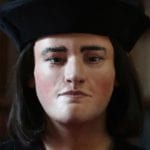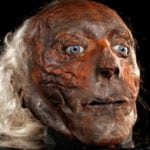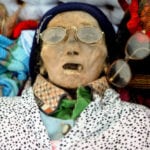 Technology
Technology  Technology
Technology  Humans
Humans 10 Everyday Human Behaviors That Are Actually Survival Instincts
 Animals
Animals 10 Animals That Humiliated and Harmed Historical Leaders
 History
History 10 Most Influential Protests in Modern History
 Creepy
Creepy 10 More Representations of Death from Myth, Legend, and Folktale
 Technology
Technology 10 Scientific Breakthroughs of 2025 That’ll Change Everything
 Our World
Our World 10 Ways Icelandic Culture Makes Other Countries Look Boring
 Misconceptions
Misconceptions 10 Common Misconceptions About the Victorian Era
 Mysteries
Mysteries 10 Strange Unexplained Mysteries of 2025
 Miscellaneous
Miscellaneous 10 of History’s Most Bell-Ringing Finishing Moves
 Technology
Technology Top 10 Everyday Tech Buzzwords That Hide a Darker Past
 Humans
Humans 10 Everyday Human Behaviors That Are Actually Survival Instincts
 Animals
Animals 10 Animals That Humiliated and Harmed Historical Leaders
Who's Behind Listverse?

Jamie Frater
Head Editor
Jamie founded Listverse due to an insatiable desire to share fascinating, obscure, and bizarre facts. He has been a guest speaker on numerous national radio and television stations and is a five time published author.
More About Us History
History 10 Most Influential Protests in Modern History
 Creepy
Creepy 10 More Representations of Death from Myth, Legend, and Folktale
 Technology
Technology 10 Scientific Breakthroughs of 2025 That’ll Change Everything
 Our World
Our World 10 Ways Icelandic Culture Makes Other Countries Look Boring
 Misconceptions
Misconceptions 10 Common Misconceptions About the Victorian Era
 Mysteries
Mysteries 10 Strange Unexplained Mysteries of 2025
 Miscellaneous
Miscellaneous 10 of History’s Most Bell-Ringing Finishing Moves
10 Faces Of Death From World Mythology
We are all familiar with the likes of the devil, the Grim Reaper, and Hades, but there are many more different aspects of death throughout history’s many cultures. Here are 10 of the most interesting faces of death you may not have heard of before.
10Mictlantecuhtli
The Aztecs
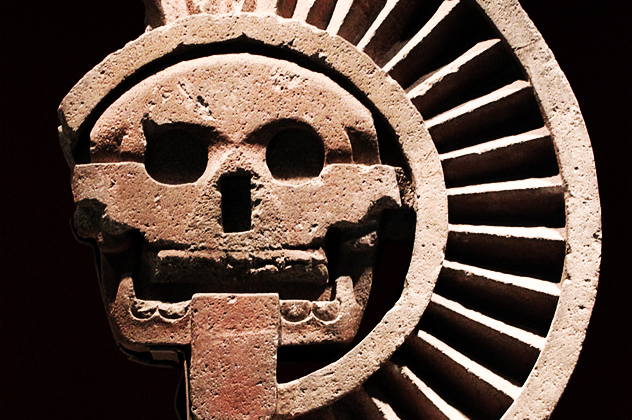
Mictlantecuhtli was one of several Aztec gods of the underworld and the one who ruled the lowest section, which was called Mictlan—the northernmost realm of the dead. Like most Aztec deities, he was associated with animals—in his case, spiders, owls, and bats. He was depicted as a blood-splattered skeleton with a necklace of human eyeballs.
Quetzalcoatl, the Aztec god of creation and the giver of life, desired to create life but needed the bones of those who lived in the previous world. Mictlantecuhtli and his wife, Mictecacihuatl, were sent to the underworld when the world was created. They protected the bones Quetzalcoatl sought and initially agreed to give them to him. When Quetzalcoatl ventured into the underworld to collect the bones, though, the god of the dead refused and attempted to keep the god of creation in the underworld. Quetzalcoatl was able to escape with the bones, but broke several on his way out, which explains why people come in all shapes and sizes.
Mictlantecuhtli’s priests would partake in ritual cannibalism, often consuming human flesh in and around the temple.
9Supay
The Inca
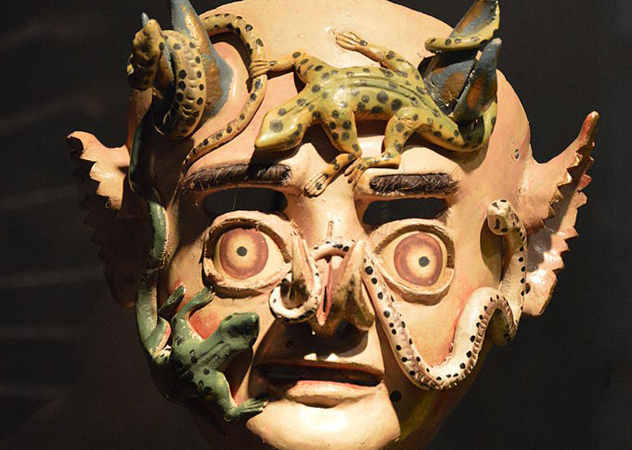
Supay was the god of death and the ruler of the Incan underworld, Ukhu Pacha. Supay ruled over a race of demons and was attributed to death, but in Incan mythology the underworld was not necessarily considered a negative aspect of death. The Inca believed underground springs to be a life-sustaining link between the living and the dead, leading to a deep respect for both Supay and the underworld.
Supay was very similar to the Christian devil, and his name has been likewise attributed to Satan by the Christians who settled South America. Though respected, Supay was greatly feared by the Inca, and various rituals were conducted to beg him not to harm the Incan people. This tradition continues to be followed by the Quechua people of South America. They participate in a festival called Mamacha Candicha (“The Flame Virgin“), which is almost entirely about dancing and lasts up to two weeks. People wear brightly colored costumes and masks in honor of Supay.
8Thanatos
Greece
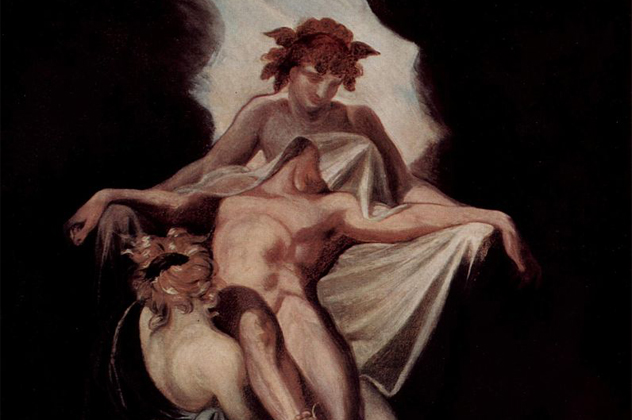
Thanatos was the Greek god of nonviolent death (opposite Mars in the Roman pantheon). His sisters, the Keres, were the spirits of slaughter and disease. He was loathed by both the mortals and the deathless gods of Mount Olympus. Mortals knew he would come sooner or later, most often in old age. His arrival was said to be unannounced and sudden. He was depicted as a bearded man with wings, similar to a Christian angel, and often carried a sword or a torch.
Thanatos was mentioned by Homer in The Iliad as well as in numerous texts from ancient Greece. He could be outwitted and, in some cases, cheated out of death, allowing someone to bypass death and become immortal. This occurred when Sisyphus trapped Thanatos in a sack to avoid his own death. When this happened, Ares, the god of war, became angry that nobody was dying as a result of his battles, since nobody could die with Thanatos disabled. Ares stepped in, freed Thanatos, and turned Sisyphus over to the god of death so that he could be punished according to Zeus’s instructions—to endlessly roll a boulder up a hill only to have it roll back down with each attempt.
7Donn
Ireland

Donn was the Irish lord of isolation and death. He lived in the Otherworld at Tech Duinn, the House of Donn off the southwest coast of Ireland. It is said that Donn would brew up storms to cause ships to crash and sink so that he could draw more souls into his realm.
The interesting thing about Donn is that he was not a god—he was a mortal man, the son of Milesius. He was killed in battle when he and his three brothers tried to take Ireland for their own. Having perished at sea, he took up residence in the location of his demise and oversaw the collection of the souls of the dead. “It was believed that after their deaths, the dead continued to walk in the land of the living as ‘shades’ until they heard the sound of Donn’s horn at Samhain, calling them to Teach Duinn, from where they traveled west over the sea to the Otherworld.”
6Meng Po
China
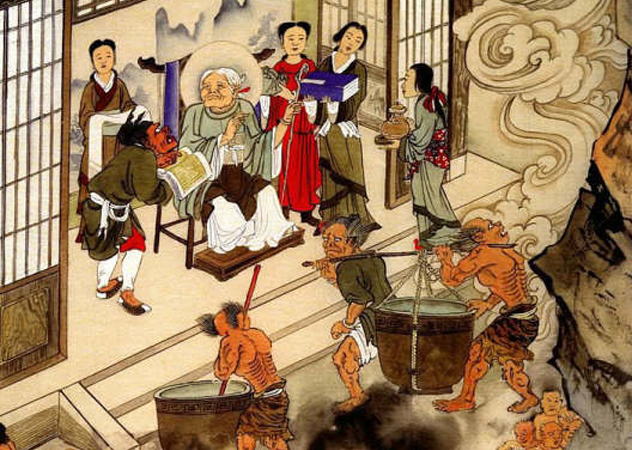
In Chinese mythology, Meng Po is the Lady of Forgetfulness. She serves in the Di Yu, which is the Chinese realm of the dead. When a soul is ready for reincarnation, it is the responsibility of Meng Po to cause the soul to forget their previous life as well as their time in Di Yu. To help people forget, she brews a special tea called the Five-Flavored Tea of Forgetfulness and provides a cup to each soul to drink. Permanent amnesia is immediately bestowed upon the soul so that they can continue their journey into a new earthly incarnation.
When a soul is resurrected into an animal, it retains its human sensibilities and feels the pain and anguish of the animal when it is slaughtered, but it’s unable to express its consternation via human speech. Because of this, many attempt to avoid drinking the tea brewed by Meng Po. “There are legends relating to miraculous births—a child is able to speak as soon as born because the soul inhabiting its body had been successful in escaping the vigilance of the guardians of Hell, and had avoided drinking the Broth of Oblivion.”
5Sedna
The Inuit
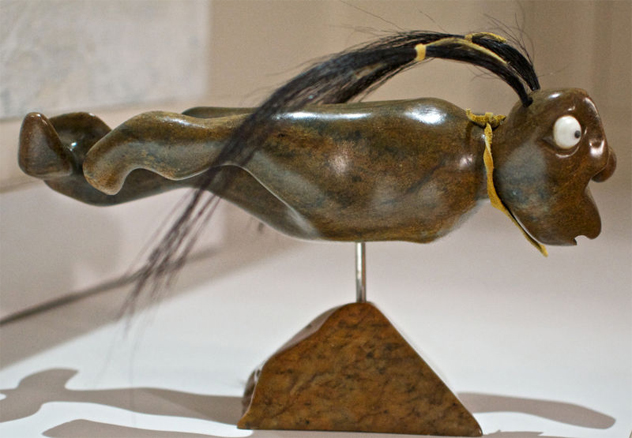
In Inuit mythology, Sedna is the mistress of the underworld and goddess of the sea. Sedna was once a beautiful, mortal woman who lived along a shoreline with her father. Her mother had been dead for most of her life, and the two had lived together side by side in harmony. Because of her beauty, Sedna was courted by men from all over, but none could woo her successfully.
When the ice broke one year, a fulmar (a type of seagull) flew over the ice and sang a song to Sedna promising to take her to a land where there is “never hunger, where my tent is made of the most beautiful skins. You shall rest on soft bearskins.” Sedna accepted the courtship and went over the vast sea with her new lover. Upon arrival, she discovered that the bird had lied to her and her new home was a desolate place filled with fish skins, wind, and snow.
Sedna suffered in her new home for a year until the ice once again broke and her father came to her rescue. Angry at the way his daughter had been treated, he killed the gull and took his daughter back in his boat. When the gull’s comrades came to find that he’d been killed, they cried for their loss and continue to cry to this day. They took to the air, found the fleeing boat, and caused a great storm to rise from the waves. Sedna’s father offered his daughter to the gulls to avoid getting killed, but she gripped the side of the boat. Her dad wasn’t too pleased and severed the first joints of her fingers, which swam away as the ocean’s whales. When he severed the next joints, they swam away as the ocean’s seals.
Thinking Sedna had drowned, the birds flew off and Sedna’s father brought her back into the boat. She was upset at what had transpired and, once they were ashore, she had her dogs gnaw off her father’s feet and hands while he slept. When he finally woke up and saw what had happened, he cursed Sedna, the dogs, and even himself. The Earth then opened up and swallowed them all. Since then, they have remained in the underworld, called Adlivun, where Sedna remains the mistress of the land.
4Ankou
The Celts
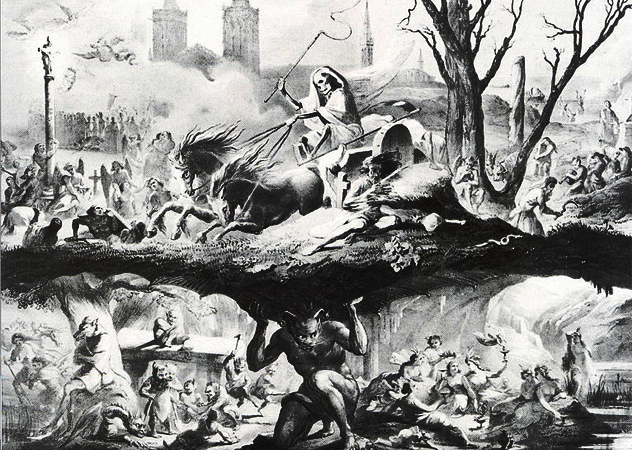
In northwest France, the Breton people believed that Ankou was the personification of death. He was depicted as both a man and a skeleton who was charged with protecting the graveyards and the souls contained within. In some cultures, Ankou was believed to be the first son of Adam and Eve, while in others he was believed to be the last man to die on December 31 each year—each new soul replacing the previous incarnation of Ankou.
Ankou’s name means “Reaper of the Dead,” and he was likely the inspiration for the Grim Reaper, at least in form and practice. When darkness fell, Ankou would drive a cart drawn by skeletal horses all along the countryside and collect the souls of the sick and the dying. Once his cart was full, Ankou would deliver his cargo to Anaon, the king of the underworld. Because Ankou would only come when daylight ended and the Moon was dark, it was possible to escape death by leaving one’s home during the daylight hours. Of course, this was not usually possible for his target audience of the sick and dying.
3Giltine
Lithuania
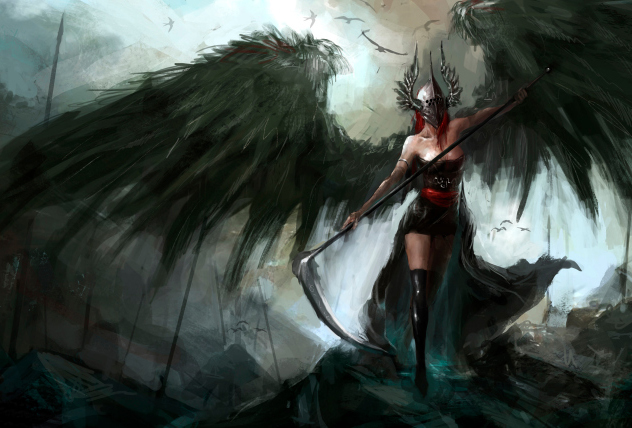
Giltine was a young, attractive woman until she was entombed in a coffin for seven years. Once she escaped, she was old, ugly, and had a long, blue nose and a poisonous tongue, which she used to lick those who were marked for death. She was both the goddess of death and its personification who would eventually take the same form as the Grim Reaper in later mythology. She could change her shape at will and disguise herself as a snake or a stick of wood. It was said that if she appeared at the foot of a dying person’s bed, that person would recover, but an appearance at the head of the bed meant certain death. It is said that she invented the medical profession, though she ruled that doctors could not interfere with her will.
During the daylight hours, she would roam through the cemeteries in a white shroud seeking coffins of the dead so she could lick the corpses to extract the poison she used to kill the living. Giltine sometimes killed with her poisonous tongue, but she wasn’t above using other means, such as strangulation or suffocation. She can be deceived at times and, if she is trapped, a person can escape death, but only for a short while. No matter what, Giltine will eventually catch up with you.
2Masaw
The Hopi
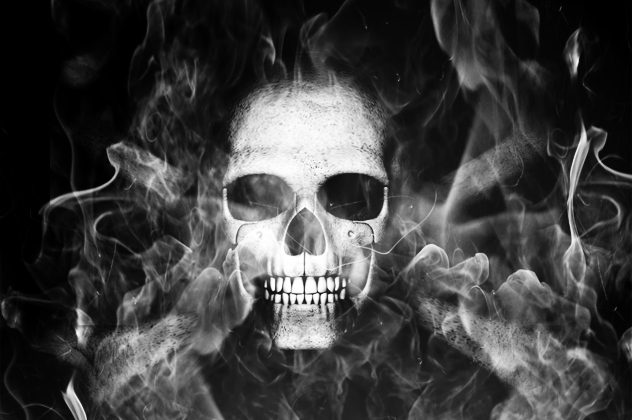
Masaw, better known to the Hopi people as Skeleton Man, was a great friend and caretaker of the Hopi people in the afterlife. In Hopi mythology, we are currently living in the Fourth World—Tuwaqachi, which means “World Complete.” The Third World that came before this one was overseen by Masaw, who held the title of head caretaker. He eventually became too self-important and lost humility before his creator, Taiowa, so he was stripped of his title and forced to become the deity of death and the underworld. As the ruler of the underworld, Masaw became the lord of the dead and the deity of fire and death who gave fire to humanity.
When the Third World was destroyed, Taiowa decided that the people of the world—as well as Masaw—should be given a second chance, so he created the Fourth World. He named Masaw as the Fourth World’s guard, protector, and caretaker. He taught the people of the world the art of agriculture, the purpose of settling down after migration, and how to live permanently off of the land.
1Aita
The Etruscans
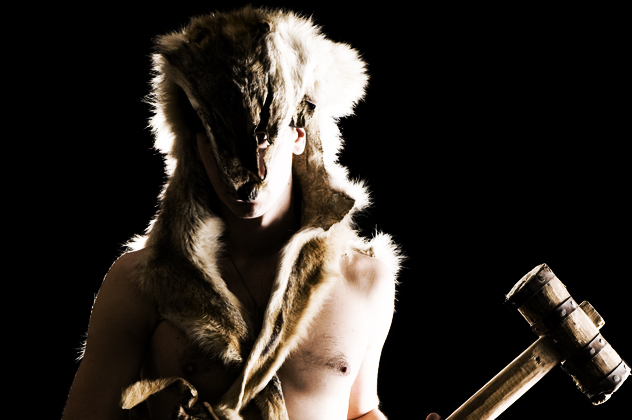
The Etruscan version of death was named Aita, a demon with the head of a wolf. Aita would take the souls of the living down into the underworld and keep them there under his reign.
He has been depicted on the sides of funerary urns as a bearded man wearing a fur cap made from a wolf hide. He leads the dead (whose ashes are within the urn) into the underworld. There are many similarities between Aita and Hades. Both have messengers who aid them: Hermes for the Greek and Turms for the Etruscans. Similarly, both have a wife or consort: Hades has Persephone, while Aita has Phersipnei.
Similarities like this are common for societies that were eventually absorbed into the Roman civilization. The Romans made a habit of incorporating the beliefs of their acquired peoples’ cultures into their own to aid in assimilation. This is the main reason why there are so many parallels between the Etruscan, Greek, and Roman pantheons. Similarities between the various gods were combined into single deities that could be worshiped by Romans, Greeks, and Etruscans alike.
I am an amateur graphic artist, illustrator, and game designer with a few independently published games through my game company, TalkingBull Games. I enjoy researching and writing about history, science, theology, and many other subjects. Find me on Fiverr, Facebook, Twitter, Kickstarter, or Deviant Art.
